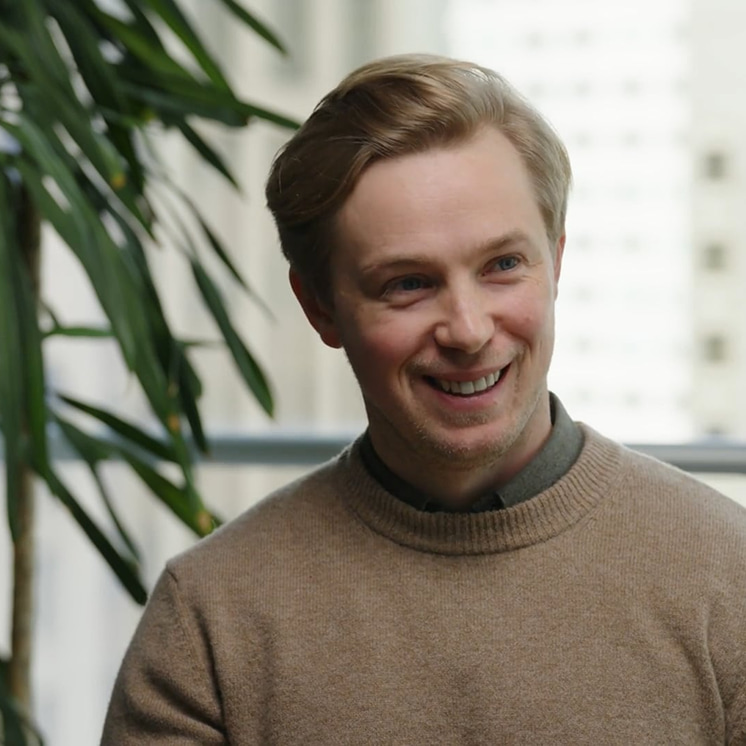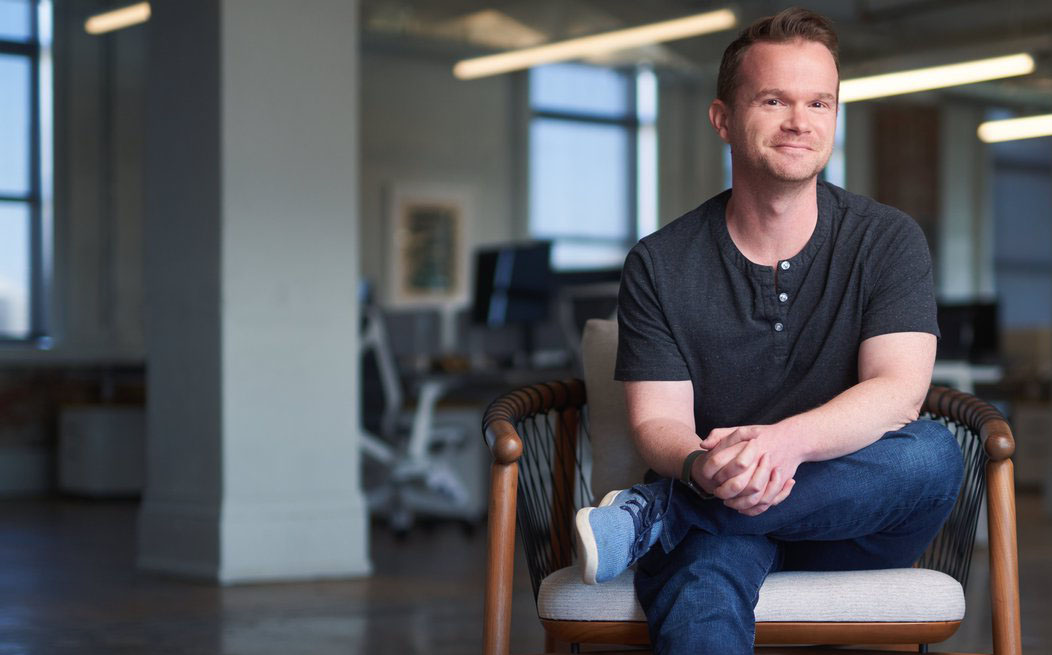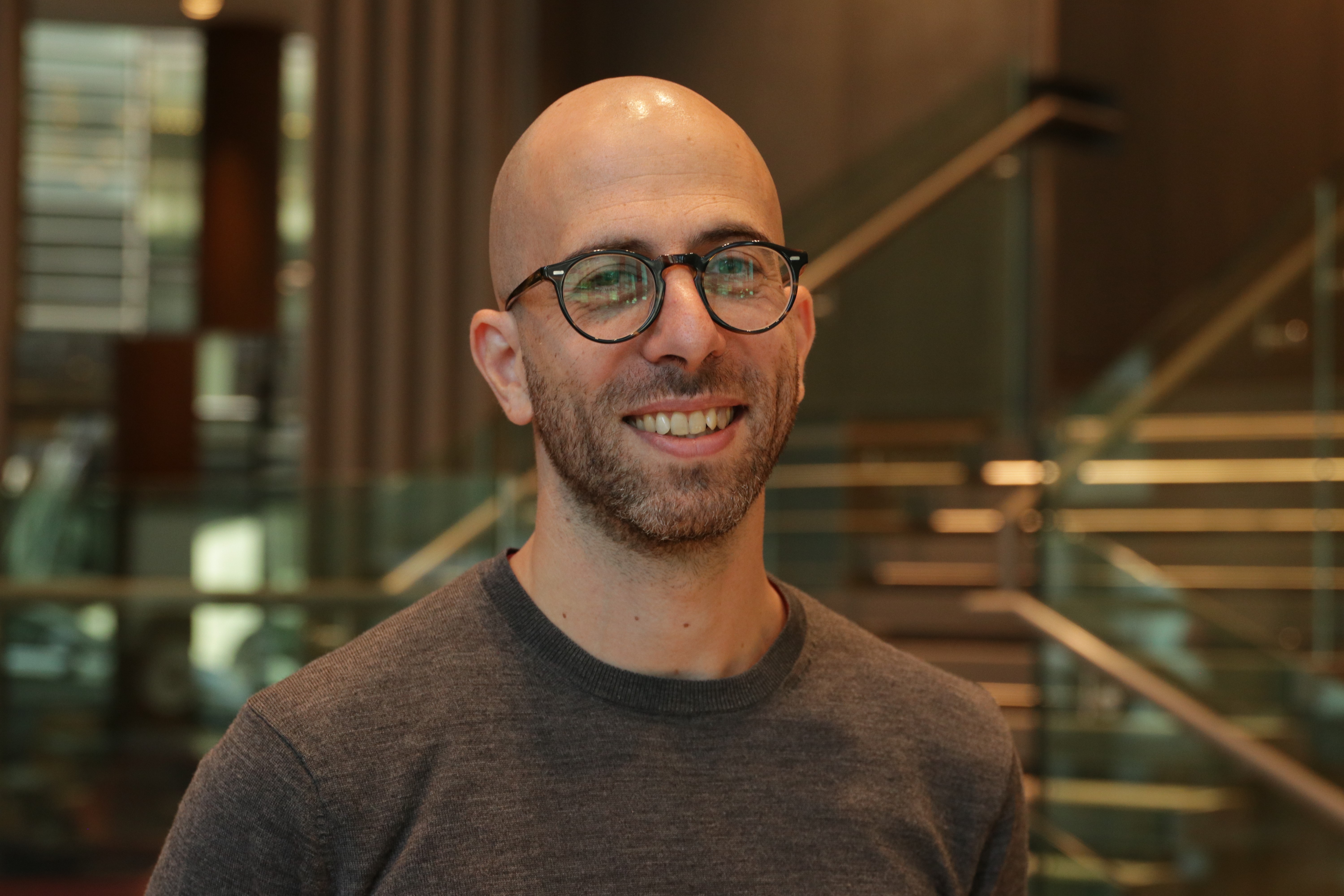Orbit Podcast
Orbit 24
The Pace of Automation
With macro trends starting to bite, will the recent successes of B2B software and tech services show themselves to be cyclical or structural? How should investors in the industry adapt their approach? Is 2023 the year of the P2P? The one thing that doesn't seem to be in question is the continued growth in the pace of business process automation.
Listen on:
Episode Transcript
Matthew Brockman:
Hello everyone and welcome to Orbit, the Hg podcast series where we speak to leaders and innovators from across the software and technology ecosystem, discussing the key trends changing how we all do business.
I’m Matthew Brockman, Managing Partner at Hg and today I’m back after six months from April talking to Hg’s Head of Research, David Toms, to discuss some of the key trends we’re seeing in the software sector over the last quarter. Been another interesting six months in the public markets, David, how would you characterize what we’ve seen in the last six months?
David Toms:
It’s been quite amazing when you look at, I suppose, the cycle we’ve been through. The last six months essentially unwound a lot of the euphoria that we saw during mid 2020 through to 2021, and essentially we’re back to 2019 in public markets terms.
Matthew Brockman:
So do you think that’s in any way structural or do you think we just saw a bit of a bubble based on free money and fiscal response to COVID? Do you see a real fundamental change in the way people are thinking about software investing?
David Toms:
So I don’t see a fundamental change in the way people are thinking about software investing or the end market. I think the two things that have changed since the end of last year are the interest rate environment, so effectively the cost of capital, and then the other thing that’s changed is the expectation of a recession, which I think is now pretty much a nailed uncertainty. So there’s a little bit more concern around trading and a slightly higher cost of capital, and it doesn’t take much of a change in small elements for you to get potentially large valuation swings.
Matthew Brockman:
So interesting article, I think it was this very morning, in the FT about the lack of IPOs in the US market, tech IPOs. That’s just investors assigned to sit on cash is it, do you think? Or we shouldn’t take that as a signal that people feel they need to be selling software or selling out of tech?
David Toms:
It’s a reluctance to commit new capital. I think we have to remember the public markets are no longer quite the arbiter they once were. But I was looking at some stats only a couple of days ago which showed that in fact, over the last decade, private equity has deployed more new capital each year than public markets. Although everyone thinks public markets is very, very large, mostly you’re just trading IOUs between each other, as in share certificates. The actual amount of new capital public markets deliver isn’t that large. Whereas private equity is much more about investing new capital and then selling on the businesses. So I think it definitely reflects a bit of a change in sentiment. But more than anything, what goes on in the public markets is driven by capital flow rather than by an active decision by an investor. If you have no new capital coming into your fund, or worse, you’ve got redemptions from your fund, then you are a forced seller and it’s very hard to buy something new.
Matthew Brockman:
It always strikes me as a such a pronounced effect, particularly here in Europe, because you’ve got very few now listed large software companies, certainly on the London Stock Exchange, and I think more broadly across Europe. And if I think about the value of our portfolio in aggregates about $115 billion or something, which means only SAP is bigger as an aggregate software company in our European market space. So the value of the private market and the scale of the private market relative the public markets is already pronounced and it feels like we’re going through another reset or at least an adjustment on appetite to deploy equity.
David Toms:
Yes, I mean, certainly in UK terms, if you just looked in pure UK terms, our portfolio is worth more than the entire listed software sector in the UK. And in fact, I think if you took out the largest three or four European listed software companies, our portfolio is worth more than the entire remainder. So the private markets are now larger, at least in the European context, in the public markets. Actually, why don’t I flip that around because you’ve done a lot of DD meetings recently with investors, Matthew. On the private side, what do you think we’re seeing in terms of desire or reluctance to commit capital?
Matthew Brockman:
So I think 2022 will have been a harder year to raise capital for GPs like ourselves, for product equity firms like ourselves, than previous years. Some of that is obviously coming off of just the sheer peaks of 2021. We’ve largely completed our fundraising, so we’ve essentially been able to raise capital I think because people basically believe the long-term story. So they don’t really see that much fundamental change in the need for software and automation, the kind of businesses we’re backing, and frankly a relatively resilient recession-proof portfolio that we put together. So their confidence around will our businesses trade well through a downturn, how will they trade, how we evidenced that previously in 2008, 2020 with COVID, and therefore how do we commit capital if pension funds are still getting capital, and they certainly do deploy it, and they still need to earn those returns. But I think they are being more discriminating about where they commit it and which funds are benefiting from that.
David Toms:
And do you think that’s influencing investment committees thinking at all in valuation or the kind of businesses we are looking at?
Matthew Brockman:
I think there is a sensitivity around pace of growth as opposed to “is there growth”. So if I think about adoption, it’s the long-term trends that are still there. More automation of workflow, more automation of jobs, more automation of processes that could be done by white collar workers. Whether that gets sold at the same velocity in 2023 as it would’ve been sold in 2020 is where you’re trying to make a calibration at an investment committee. I have a long list of or long queue of investment bankers coming to my office telling me about how the public market’s are oversold and next year 2023 is going to be the year of the P2P and we should be dusting off our files, as they literally say. Do you buy that? Do you think we’re going to have a whole bunch of things going private next year, that that will continue to be a very significant trend?
David Toms:
I think it will continue to be a trend. Without wanting to insult the investment banking community too much, there is a slight tendency for advisors to come and tell you what they’re seeing. And what we are seeing out there in the market right now is a lot of P2Ps and obviously we’ve participated in some of that. So I think we will continue, at current valuations, we will continue to see P2Ps because they look attractive. The challenge is more execution than it is opportunity or attractive valuation. And I’m not sure we’re quite in a world yet where a 25, 30% premium gets you all the businesses you want to buy. I think we’re still in a world where boards have last year’s peak in the back of their mind.
Matthew Brockman:
I mean, that’s certainly our experience, which is the correction from last year was so pronounced where I guess last year was such a leap from 2019/20, it’s probably, what, doubling of revenue multiple for unprofitable companies. That then dropped obviously very significantly in the early part of this year. If you then really think about what it takes to get done premium significant and probably above history. And again, so the traded share price is not necessarily the greatest indicator of what it would really take to get a deal to happen.
David Toms:
Yes, definitely. I mean, yeah, the price on the screen is an indication of what the last person traded, in some cases, half a dozen shares at. It’s not the price even that an institution or buyer might be able to buy 5 or 10% of the company at, or that an institutional seller that might be able to sell 5 or 10% of the company at. I sometimes wonder if it would actually be easier to buy 5 or 10% of a very large private company, if we think of the liquidity we see in a business like Visma, than it is to buy the equivalent public asset or a chunk of the equivalent public asset.
Matthew Brockman:
And mixed with the usual sort of private equity incentives and governance model as opposed to a public model.
David Toms:
Yes, exactly. Yes. And I think that governance is still such a big difference, and it’s not just the paper-based governance, people worry about having to declare the salary of all the executives and those kind of things. It’s the more fundamental stuff. If you look at the change in environment over the last three years from an evaluation perspective, the behaviors that would’ve been appropriate to drive shareholder value in 2019 were dramatically different to the behaviors that were appropriate in 2021, and now they’re reversed again. So if you were setting a management incentive plan in 2019, and that incentive plan was, let’s say, add two percentage points to margin each year and allow your growth to pay five percentage point, in 2019, that would’ve been a really sensible thing to do and have been value accretive. By 2021, you’d have been hemorrhaging value if you’d been trading one point of growth for two of margin, yet now we’re back in position where it’s the right thing.
So if you set your extensive plan in 2019, in 2021, you’d be feeling pretty depressed as a chief exec, whereas whatever the remuneration committee set in 2021, if it was a very growth-driven plan, is going to look pretty bad this year. That’s a tough way to run a company.
Matthew Brockman:
And that’s a public market environment, that’s a board level or institution shareholder directive or direction that you sense from 2019 through to 21/22 that you’re talking about?
David Toms:
Yes, I mean, I think some of the shareholders do have a longer term perspective, and they will say we expect company be driven this way for value, and don’t worry too much about the market. But in the end, the shares are changing hands and the same group of shareholders that supported a remuneration committee in 2019 might all have sold their positions by 2021. So yes, I think it’s difficult for a company to stay on top of what the right thing is to do, not just for the shareholders they spoke to but their current shareholders when the market’s changing so much.
Matthew Brockman:
So we opened up earlier on around recession, and obviously there is slowing economies, there’s interest rate pressure, there’s disposal spend pressure in a lot of our economies. Fundamentally changed appetite for software adoption, fundamentally changed the way automation is moving or no change?
David Toms:
So I think no overall change. The structural drivers are there. Clearly if companies have a bit less money and a few more of them are going out of business, then you sell a little bit less new business. But in terms of your cross sell, upsell, renewal, those kind of things, the value of the customer base, I think that’s largely unchanged. What we are almost seeing in the US is definitely more negative guidance around sales cycles, particularly new business sales cycles. And I did a little bit of analysis of the Q2 results from US listed software companies, about 40 companies, and just over a third of them had a negative guidance for the next 12 months. And in almost every case, that was blamed on the sales cycle. So it’s definitely getting a little bit tougher to sell new business.
Matthew Brockman:
So it feels like there’s a trade off between of shorter term incrementally, can I sell new products, can I get new logos, how fast am I getting adoption of products at versus the medium/long term, which remains, I think, very vibrant on automation. Pressure on wages is inevitably going to drive automation, which is going to make people try new software, which is going to try and automate more business process, which again has just been a long-term driver, which I think tends to accelerate in periods like this.
David Toms:
Yes, I mean, it’s quite interesting. I had a summer holiday in Singapore, which tends to be quite an advanced economy because it’s a reasonably small city. So things can take off quite fast. And when you walk into almost anything other than a very high-end restaurant in Singapore now, there’s a barcode on your table. Nobody has menus. You scan the barcode, everyone does that on their phone, everyone orders from the menu, it all goes to the kitchen, and you think, “Well, okay, that saved having a member of waiting staff.” But actually, it’s much more fundamental than that because a restaurant used to have almost no stock control. If you wanted to know how much rice or broccoli you had left at the end of the day you went in the pantry and you counted the stuff out. Well, now that everybody’s ordering electronically, you’ve got really good insight into your stock control of the flow. You can then have automated ordering, you can have a whole bunch of stuff out the back end in terms of B2B process that never existed before.
So a potentially small change can be the tipping point for a lot of very significant change out the back.
Matthew Brockman:
I guess it’s an extension of the continued trend we’ve done for many years, which is this ultimately the, what is it, nearly 11 years since Software Is Eating The World was published in The New York Times, and we’re still in the early stages. There’s still essentially SaaS penetration I think is below 20% in most vertical application markets. And so the adoption of sophisticated software with very high performance is still frankly in its very early stages in a bunch of these industry sectors.
David Toms:
Yes, and I think you see it all the time. I picked on leisure as an industry because leisure has, in some ways, been quite advanced, but in some ways very, very human dependent and obviously that’s changing. But yeah, we see it in all kinds of things where there’s accounting software, your markets, we think are saturated and then we see a load of new opportunities coming up. So yes, we’re still definitely very early. And of course all these penetration stats you see tend to be penetration against the existing installed estate. But what we also know from SaaS is it just drives a massive wave of adoption by never never users who for the first time can suddenly use software without all the cost of installing and configuring and operating. They can just use it.
Matthew Brockman:
So I’m going to put you on the spot slightly as the final question. Public markets, going to bounce back, hold steady? Are we flat now? Do you think we’re at the end of the sell off? We’ll be back in six months to see what the real answer to the question is. What’s your sense?
David Toms:
So I think we are definitely through most of the worst. So from a personal perspective, since about June, I’ve been putting money back into the public markets in a reasonable way, at least for me. So I think we’re through the worst of it. I think from a structural perspective, the public markets are still undercooking the growth opportunity, and I mean, we spoke at a conference a couple of months ago overseas about this, about if you look at what’s implied by current valuations in terms of the terminal growth rates, you take your today’s cash flows and you say, “Okay, what are those going to fade to over the next 10 years? What’s the implied assumption in the stock prices today?” And it’s broadly that the software delivery growth will fade to about 2% in 10 years time, that it’ll fade to GDP growth. We just don’t see any of that in the industries we’re investing in.
That same assumption was made 10 years ago. So based on the assumptions people make in 2012, the industry is supposed to be growing at about 2% today. The reason it’s not is why S&P’s software index in the US is now $5 trillion, not $1 trillion, is because it actually continue to grow double digit. And so we’ve got much more profit than we thought we’d have and we’ve got more growth. So I think the structural side of things, that 2% assumption, is still wrong. So whether you get a rapid correction of people saying actually 20, 25 times is the right level to price things at, which implies you’re at a higher, but still not ludicrous percentage growth at the end, or whether it’s just a more gradual realization over years, I’m not sure, but I’d say from a structural perspective, yes, we’re undervalued.
Matthew Brockman:
Just to make it very clear to anyone listening, we’re obviously not giving you investment advice here. This is purely David Toms’ own personal opinions of where the market is. Thank you very much for your time, David. We’ll be back in six months to see where we really are.
David Toms:
Excellent. Thank you, Matthew.
Orbit episodes
Orbit Podcast
The 3 speed problem: Oji Udezue on CPO leadership in the age of unlimited engineering
Episode detailsOrbit Podcast
Fevered determination: Building Zalos from zero to enterprise in 5 weeks
Episode detailsOrbit Podcast
Trust, velocity, and building the Answer Engine: Dmitry Shevelenko of Perplexity speaks to Farouk Hussein
Episode detailsOrbit Podcast
The long road to the last mile: Nic Humphries and Matthew Brockman reflect on 25 years of Hg
Episode detailsOrbit Podcast
AI, Control Points, and the Next Wave of Vertical SaaS with Tidemark Capital founder, Dave Yuan
Episode detailsOrbit Podcast
A glimpse of the next generation: Zoe Zhao and Annalise Dragic of Azlin Software
Episode detailsOrbit Podcast
The business case for AI: Brent Hayward of Salesforce, David Carmona of Microsoft & Nagraj Kashyap of Touring Capital
Episode detailsOrbit Podcast
Mastering the billion-dollar software playbook: Joe Lonsdale of 8VC & Eric Poirier of Addepar
Episode detailsOrbit Podcast




















































